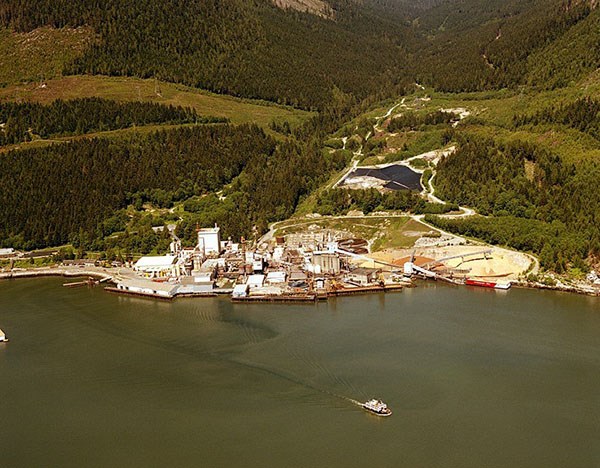The proponents of a liquefied natural gas facility say a $2 million property tax figure thrown out this month was just a starting point for discussions.
On July 16, Woodfibre Natural Gas staff wrote a letter to the District of Squamish requesting that the municipality enter into an agreement by which Woodfibre would pay $2 million in property tax. The fee would increase annually with inflation — 2.5 per cent — to a maximum cap of $3 million. The provincial government has a property tax cap in place for B.C.’s major port facilities — which includes Squamish Terminals.
Throughout last June’s public meetings, the facility’s backers continually received questions from residents regarding the plant’s tax payments, Woodfibre spokesperson Marian Ngo said. Responding to inquiries, the proponent put a rough estimate together to spur discussion.
“It was indicated that maybe it would be easy to calculate, but despite our best efforts and discussions with officials, no one was able to calculate the tax rate in advance of conception,” Ngo said.
District staff told the proponent that the normal procedure is to calculate construction cost, followed by an assessment by the B.C. Assessment Office. From this, a mill rate is applied — the amount of tax payable per dollar of the assessed value of the property.
“We were also informed that only the buildings and not the machinery and equipment would be assessed as part of the rate,” Ngo said, noting a big chunk of the $1.7 billion project is the technology and equipment.
The project’s environmental assessment has not yet been submitted to the province nor have engineers completed construction details to fully estimate building costs, Ngo noted. The plant’s design has also changed, moving the processing which was initially slated to be off-shore, on-shore.
“We hoped that this number would trigger discussions, negotiations amongst the public and governments so we can get certainty,” Ngo said. “There have been so many figures out there.”
Property tax will not be a deal breaker for the project, she noted. The proponent wasn’t budgeting for a small figure.
“It is our intention to pay a fair and responsible rate,” she said.
The initial letter to council was rescinded, so that the proponent could submit a new letter without a confidentiality clause. As such, there hasn’t been much discussion regarding the unsolicited proposal at city hall, Coun. Ron Sander said.
District staff need to do their due diligence and hire a consultant to determine the value of the proposed plant and whether a $2 million property tax is a fair rate, Sander said. Council also must consider the outcome of the environmental assessment, he noted.
“If the EA process is done correctly, and the outcome is good, I am fully supportive of it,” Sander said.
Squamish can’t rely solely on tourism, he said. The community’s economy needs diversity to weather any economic storm, Sander said.
“Recreation is what that is, it’s what people do when they can afford to do it. So that’s great when you have an economy that allows people to go out and buy multi-thousand dollar bikes. When the main economy takes a downturn usually those sectors get hit pretty hard.”
Tracey Saxby questions how Woodfibre proponents estimated a property tax that matches that of the former pulp mill on the site 10 years ago. Real estate values have increased, along with interest and the value of a LNG facility seem higher than that of a pulp mill, she noted.
In contrast to Coun. Sander, the co-founder of the anti-LNG group My Sea to Sky, said Squamish shouldn’t hang all it’s hopes on a “boom or bust fossil fuel” industry. The district needs to encourage a diverse economy through the growth of sustainable industries and businesses, something that’s occurred since the pulp mill closed in 2006, she said.
Capping the municipal tax at $3 million doesn’t seem like a fair figure, Saxby added.
“They’re trying to get a deal rather than paying their fair share,” she said.
No matter where the final property tax figure falls, she said she would be concerned that the project would negatively impact on local business, dropping property prices and hitting tourism.
“This is why we have asked for a full cost benefit analysis.”




